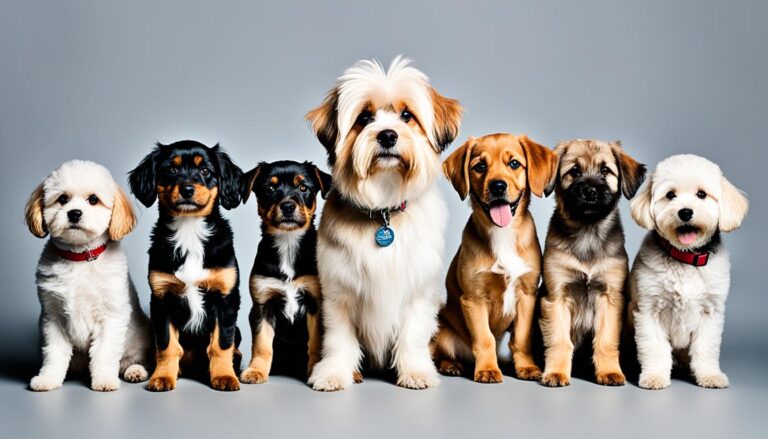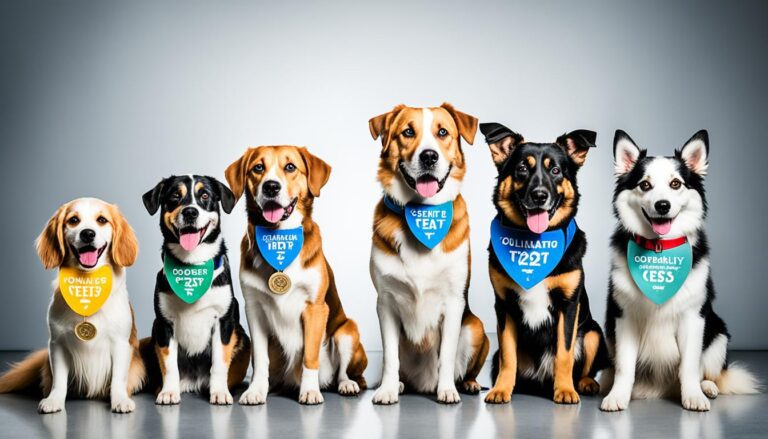German Shepherd obedience training – Tips for training German Shepherds in obedience.
This comprehensive guide provides essential tips and techniques for effectively training German Shepherds in obedience. German Shepherds are known for their intelligence, trainability, and strong protective instincts, making them excellent companions when properly trained. This article will delve into understanding the breed’s unique traits, establishing a positive reinforcement approach, mastering basic obedience commands, and addressing common training challenges such as leash training, crate training, and socialization. By following these expert-backed strategies, you can build a strong bond with your German Shepherd while ensuring they become well-behaved and responsive to your commands.
Key Takeaways
- German Shepherds are highly intelligent and trainable dogs, making them responsive to positive reinforcement training methods.
- Establishing a consistent training routine and providing ample exercise and mental stimulation are crucial for successful German Shepherd obedience training.
- Mastering basic obedience commands, such as sit, stay, come, down, and heel, lays the foundation for more advanced training.
- Proper leash training and crate training can help ensure the safety and well-being of your German Shepherd.
- Socialization is key to building a confident and well-adjusted German Shepherd, both as a puppy and as an adult dog.
Understanding the Breed’s Traits
To effectively train your German Shepherd, it’s crucial to understand the breed’s unique characteristics. German Shepherds are highly intelligent and eager to learn, making them responsive to training, particularly when positive reinforcement methods are employed. Their trainability and eagerness to please their owners are key assets in the training process.
Intelligence and Trainability
German Shepherds are known for their exceptional intelligence, which allows them to excel in a wide range of training disciplines. These dogs are quick learners and thrive on mental stimulation, readily responding to clear commands and consistent positive reinforcement. Their trainability makes them highly adaptable to various obedience and behavior modification techniques.
Energy Levels and Exercise Needs
German Shepherds are high-energy dogs that require ample physical exercise to maintain their well-being and prevent behavioral issues. These active canines need a daily routine that includes a combination of structured activities, such as walks, hikes, or playtime, along with mentally stimulating tasks like obedience training or puzzle toys. Providing adequate exercise and mental stimulation is crucial for keeping your German Shepherd balanced and content.
Protective Nature and Socialization
German Shepherds are known for their strong protective instincts, which can be both an asset and a challenge during the training process. While this breed’s natural guarding tendencies can make them excellent companions, it’s essential to socialize them early and consistently to ensure they develop a well-rounded, confident, and trustworthy temperament. Proper socialization helps German Shepherds learn to interact appropriately with people, animals, and new environments.
Establishing a Positive Reinforcement Training Approach
When training a German Shepherd, it is essential to adopt a positive reinforcement approach. This method focuses on rewarding desired behaviors rather than punishing undesirable ones. By using treats, praise, and other motivating rewards, you can effectively shape your German Shepherd’s behavior and build a strong bond of trust and cooperation.
The Power of Rewards and Praise
German Shepherds are highly responsive to reward-based training. By consistently providing positive reinforcement when your dog exhibits the behaviors you want to encourage, you’ll reinforce those actions and strengthen the German Shepherd training process. This approach not only helps your dog learn faster but also fosters a deeper connection between you and your canine companion.
Building a Solid Foundation
Establishing a German Shepherd training foundation through positive reinforcement lays the groundwork for more advanced obedience training. By starting with basic commands and rewarding your dog’s progress, you’ll create a strong platform for building upon their skills and confidence. This solid foundation will serve you well as you progress to more complex training exercises and challenges.
Mastering Basic Obedience Commands
Establishing a solid foundation in basic obedience commands is crucial for training your German Shepherd. These essential commands not only help your dog respond to your instructions but also lay the groundwork for more advanced training. Let’s explore the key commands of sit, stay, come, down, and heel.
Sit, Stay, and Come
The sit, stay, and come commands are the backbone of German Shepherd obedience training. Teaching your dog to sit on command, stay in one position until released, and come when called are critical for maintaining control and safety in various situations. Consistent practice and positive reinforcement are essential for mastering these commands.
Down and Heel
The down and heel commands are equally important for German Shepherd obedience. The down command teaches your dog to lie down on cue, which can be useful for calming and controlling your dog in different environments. The heel command ensures your German Shepherd walks calmly and attentively by your side, which is particularly important during leash training and when navigating crowded areas.
| Command | Description | Benefits |
|---|---|---|
| Sit | Your dog sits on their haunches when prompted | Establishes control, builds focus, and can be a precursor to more advanced commands |
| Stay | Your dog remains in the same position until released | Teaches impulse control, patience, and obedience in various settings |
| Come | Your dog returns to you when called | Enhances safety, allows you to quickly retrieve your dog, and strengthens the bond |
| Down | Your dog lies down on the ground when prompted | Helps calm and control your dog in different environments, facilitates training |
| Heel | Your dog walks calmly and attentively by your side | Maintains control during leash training and in crowded areas, promotes focus |
Leash Training: A Crucial Skill
Leash training is a crucial skill for German Shepherds, as it helps ensure their safety and your control in various environments. Mastering loose leash walking and addressing issues such as pulling and lunging are essential components of this training.
Teaching Loose Leash Walking
Loose leash walking is a fundamental skill that allows your German Shepherd to enjoy walks without constantly pulling on the leash. Begin by rewarding your dog with treats and praise whenever they walk calmly by your side. Gradually increase the duration of these calm, loose-leash periods, and avoid rewarding any pulling or lunging behaviors.
Dealing with Pulling and Lunging
If your German Shepherd has a tendency to pull or lunge on the leash, it’s important to address these issues proactively. Utilize the “be a tree” technique, where you stop walking whenever the dog pulls, only resuming the walk when the leash is loose. Consistently applying this method can help your dog learn that pulling does not get them what they want.
| Training Technique | Description | Benefits |
|---|---|---|
| Loose Leash Walking | Rewarding calm, controlled walking alongside the handler | Promotes safety, control, and enjoyment during walks |
| “Be a Tree” | Stopping and refusing to move when the dog pulls on the leash | Teaches the dog that pulling does not get them what they want |
By mastering these
leash training
techniques, you can ensure your
German Shepherd
remains safe and well-behaved while on walks, allowing you both to enjoy the experience.
German Shepherd training – Tips for training German Shepherds in obedience
When it comes to training your German Shepherd, the key is to adopt a positive reinforcement approach. This means rewarding desired behaviors with treats, praise, and other motivating rewards. By using this method, you can effectively shape your German Shepherd’s obedience and build a strong bond of trust and cooperation.
Mastering basic commands, such as sit, stay, come, down, and heel, is the foundation of successful German Shepherd training. Consistency and patience are paramount, as these intelligent and eager-to-please dogs thrive on clear expectations and a strong relationship with their owners.
Leash training is a crucial skill for German Shepherds, helping to ensure their safety and your control in various environments. Focus on teaching loose leash walking and addressing issues like pulling and lunging to create a well-behaved canine companion.
Crate training can also be an invaluable tool, providing a safe and comfortable space for your German Shepherd. Introduce the crate gradually, using positive associations and games to make it a desirable retreat for your dog.
Socialization is another critical aspect of German Shepherd training, helping to build confidence and trust. Expose your dog to a variety of people, animals, and environments in a positive and controlled manner, both as a puppy and throughout their adult life.
Finally, remember that German Shepherds are high-energy, intelligent dogs that require a balanced approach to physical exercise and mental stimulation. Incorporate a consistent daily exercise routine and provide engaging enrichment activities to keep your dog happy, healthy, and well-trained.
Crate Training for German Shepherds
Crate training can be an invaluable tool in the training and management of German Shepherds. When done correctly, it can provide a safe, comfortable space for your dog and facilitate various aspects of their care and training.
Introducing the Crate
The key to successful German Shepherd crate training is to introduce the crate gradually and positively. Start by placing the crate in a quiet, high-traffic area of your home and leaving the door open. Encourage your dog to explore the crate by placing their favorite treats or toys inside. This will help them associate the crate with positive experiences and build a sense of safety and security.
Crate Games and Positive Associations
To further reinforce the positive crate experience, engage your German Shepherd in various crate games and activities. This may include feeding your dog their meals in the crate, rewarding them with treats for entering the crate, and even practicing the “go to your crate” command. By making the crate a source of comfort and reward, you’ll help your dog develop a strong positive association with their designated space.
Patience and consistency are crucial when it comes to German Shepherd crate training. Take the time to properly introduce the crate and gradually build your dog’s comfort level. With a positive approach, your German Shepherd will soon learn to view their crate as a cozy, safe haven, making it a valuable tool in their training and overall well-being.
Socialization: Building Confidence and Trust
Socialization is a critical aspect of training and raising a well-adjusted German Shepherd. Exposing your German Shepherd to a variety of people, animals, and environments in a positive and controlled manner can help build their confidence and trust, while preventing potential behavioral issues.
Puppy Socialization
The early months of a German Shepherd’s life are a crucial window for socialization. During this time, it’s important to introduce your puppy to new sights, sounds, and experiences in a way that helps them develop a calm and adaptable temperament. This can include supervised interactions with other people and animals, as well as exposure to various locations and stimuli.
Proper puppy socialization not only helps your German Shepherd become more confident and comfortable in different situations, but it also lays the foundation for their ability to trust and bond with you and other individuals later in life.
Adult Dog Socialization
Socialization doesn’t stop once your German Shepherd reaches adulthood. Continuing to expose your dog to new experiences and environments can help maintain their confidence and trust, even as they mature. This may involve taking your adult German Shepherd on regular outings, introducing them to new people and pets, and encouraging positive interactions in a variety of settings.
By prioritizing socialization throughout your German Shepherd’s life, you can help ensure they develop into a well-adjusted, confident, and trustworthy companion.
Exercise and Mental Stimulation
German Shepherds are highly energetic and intelligent dogs, requiring a balanced approach to physical exercise and mental stimulation to thrive. Incorporating a consistent daily exercise routine and providing engaging enrichment activities are crucial for their well-being and training success.
Daily Exercise Routine
A well-structured German Shepherd exercise regimen should include a combination of vigorous physical activity and mentally stimulating exercises. Aim to provide your German Shepherd with at least 30-60 minutes of daily exercise, which can include walks, runs, playtime, and activities like fetch or agility training. Ensuring your dog gets adequate physical exercise will help them burn off excess energy, improve their overall fitness, and maintain a healthy weight.
Enrichment Activities and Toys
In addition to physical exercise, German Shepherds thrive on mental stimulation to prevent boredom and behavioral issues. Provide a variety of enrichment activities and interactive toys that challenge your dog’s problem-solving skills and curiosity. This can include food-dispensing puzzles, snuffle mats, treat-hiding games, and obedience training exercises. Engaging your German Shepherd’s mind will help them stay mentally sharp, satisfied, and well-adjusted.
Consistency and Patience in Training
To achieve successful German Shepherd training, consistency and patience are paramount. These intelligent and eager-to-please dogs thrive on clear expectations and a strong bond with their owners, which can only be developed through a disciplined and patient approach.
Maintaining German Shepherd training consistency is crucial for your dog to understand and respond to your commands. Applying the same techniques, cues, and rewards consistently across all training sessions and daily interactions will help your German Shepherd learn and retain the desired behaviors more effectively.
Equally important is German Shepherd training patience. These dogs may require more time and repetition to master certain skills, especially when addressing complex behaviors or overcoming ingrained habits. By approaching the training process with patience and understanding, you can foster a positive and rewarding learning environment for your canine companion.
Successful German Shepherd training is built on the foundation of consistency and patience. By consistently reinforcing desired behaviors and patiently guiding your dog through the training process, you can develop a strong, trusting relationship and help your German Shepherd reach its full potential as a well-behaved and responsive companion.
Conclusion
In the realm of German Shepherd obedience training, the journey towards a well-behaved and responsive canine companion is truly a rewarding experience. By understanding the unique traits of the German Shepherd breed, such as their intelligence, trainability, and energy levels, you can tailor your approach to ensure optimal success.
Establishing a positive reinforcement training methodology, where rewards and praise are the foundation, has proven to be a highly effective way to shape your German Shepherd’s behavior. Mastering basic obedience commands, like sit, stay, and come, lays the groundwork for more advanced training, while diligent leash training and crate training can address common challenges faced by German Shepherd owners.
Equally important is the role of socialization, both for puppies and adult dogs, in building confidence and trust. Coupled with a consistent exercise routine and engaging enrichment activities, your German Shepherd will thrive, both physically and mentally. By maintaining a patient and consistent approach throughout the training process, you can cultivate a strong bond with your canine companion and witness their transformation into a well-rounded, obedient, and confident dog.
FAQ
What are the key traits of German Shepherds that affect their training?
German Shepherds are known for their intelligence, trainability, high energy levels, and strong protective instincts. Understanding these breed-specific characteristics is crucial for effectively training and managing your German Shepherd.
How can I establish a positive reinforcement approach when training my German Shepherd?
Positive reinforcement, which focuses on rewarding desired behaviors with treats, praise, and other motivating rewards, is the most effective training method for German Shepherds. This approach builds a strong bond of trust and cooperation between you and your dog.
What are the basic obedience commands I should teach my German Shepherd?
The essential obedience commands for German Shepherds include sit, stay, come, down, and heel. Mastering these commands lays the foundation for more advanced training and ensures your dog’s responsiveness to your instructions.
How can I effectively train my German Shepherd to walk on a loose leash?
Leash training is crucial for German Shepherds. Teaching them to walk on a loose leash and addressing issues like pulling and lunging will help ensure their safety and your control in various environments.
Why is crate training important for German Shepherds, and how do I introduce it?
Crate training can be an invaluable tool for German Shepherds, providing a safe, comfortable space and facilitating various aspects of their care and training. Introduce the crate gradually, using positive associations and crate games to make it a welcoming environment for your dog.
How can I properly socialize my German Shepherd to build confidence and trust?
Socialization, both as a puppy and throughout their adult life, is critical for German Shepherds. Exposing them to a variety of people, animals, and environments in a positive and controlled manner can help build their confidence and prevent potential behavioral issues.
What kind of exercise and mental stimulation do German Shepherds need?
German Shepherds are highly energetic and intelligent dogs, requiring a balanced approach to physical exercise and mental stimulation. Incorporating a consistent daily exercise routine and providing engaging enrichment activities are crucial for their well-being and training success.
Why is consistency and patience important when training a German Shepherd?
Consistency and patience are paramount when training a German Shepherd. These intelligent and eager-to-please dogs thrive on clear expectations and a strong bond with their owners, which can only be achieved through a disciplined and patient approach.







One Comment